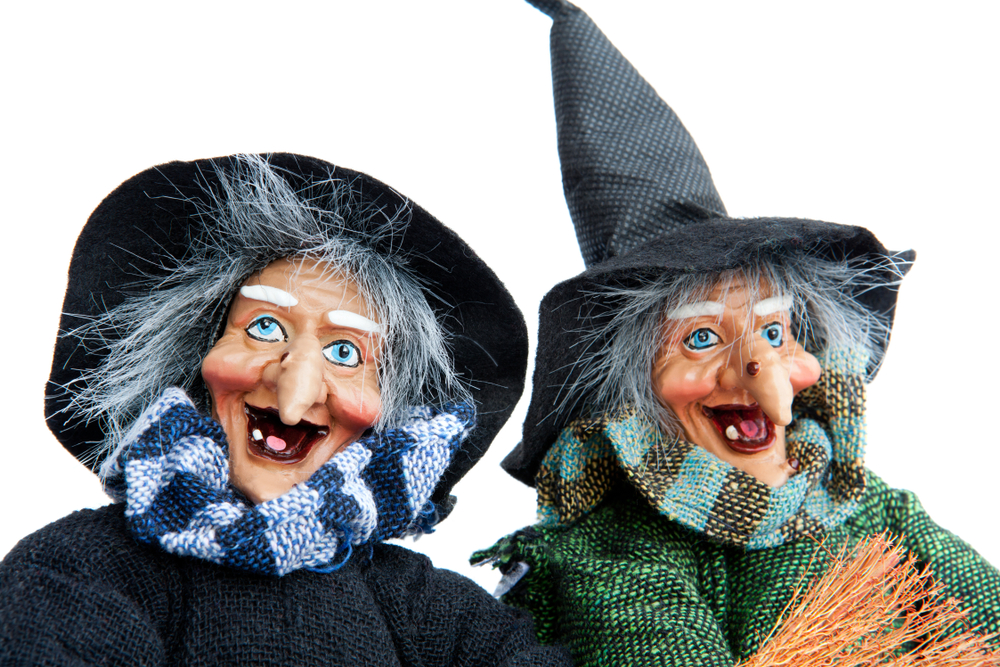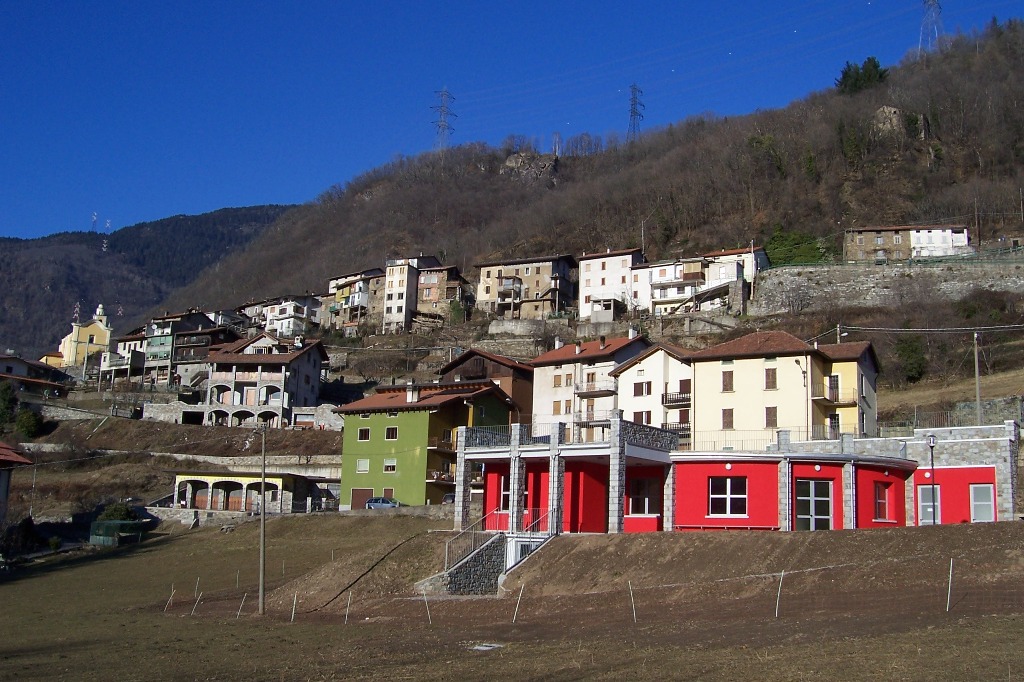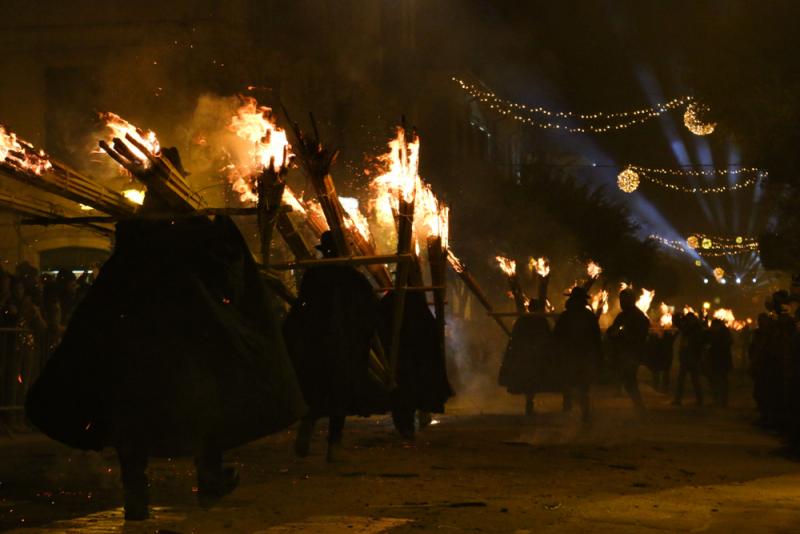While Italy’s cast of Christmas characters includes some very familiar figures — Babbo Natale (Santa), naturally, and La Befana, the frumpy Christmas witch who broom-zooms around the country delivering gifts on Epiphany Eve — more obscure (and bizarre) traditions decorate the Italian landscape at Christmastide. Here’s a look at some lesser-known customs taking place around the peninsula during the festive season.
Befani
Nah, this one's not what you think. Befani are not a blatant misspelling of befana but a cheeky twist on her traditional role, in perfect keeping with the legendary umorismo toscano (Tuscan sense of humor). Come the close of Christmastide on January 6, Tuscan men dress up as befani or befanotti, raggedy male witches in drag who accompany La Befana through towns and villages on her gift-giving procession. The purpose of the befanotti is, in part, to herald the arrival of Easter: As they parade through town amid a generally loud and cheerful ruckus, they shout “Buona Pasqua” (Happy Easter) to all. This act derives from church practice, as the Feast of the Epiphany is the day on which the upcoming liturgical calendar of movable feasts is announced, Holy Week and Easter festivities included. Given that these important liturgical announcements would typically be made by priests, some interpret the irreverent befanotti, with their rouged faces and playful gibes, as subversive towards Church authority. (By the way, befanotti and befanini are also names for the stocking-shaped, colorfully decorated Christmas cookies Italians bake for La Befana.)
Frau Perchta

In some parts of Italy, La Befana has a not-quite-as-famous pre-Christian counterpart, Frau Perchta. Descended from the Alpine winter goddess Perchta, the figure of Frau Perchta is still closely linked with Midwinter and Christmastide, especially in those northern Italian regions influenced by Germanic and Austrian tradition (such as South Tyrol).
Though she sometimes figures as a young, beautiful woman brimming with light, more often, Frau Perchta is crone-like in appearance, dressed in tattered, shabby clothes, and with a wrinkled face, bright eyes and hooked nose. La Befana and Frau Perchta share other qualities as well, rewarding the “good” and punishing the “bad,” and both possessing the supernatural ability to fly during winter’s darkest nights as they complete their respective missions.
While La Befana fills the stockings of “good” children with treats and, at worst, leaves sugary lumps of coal for “bad” children, Frau Perchta inflicts punishments of a far ghastlier nature. She carries a knife (or sickle) on her wintry flight, ready to slit open the stomachs of any naughty folks! The reason? As a domestic sphere goddess — in fact, one of her personifications is “spinning room lady” — Perchta is perennially offended by untidiness, particularly at the close of the year, a point in the calendar cycle when the literal and symbolic clearing out of the past year’s “messes” is paramount. Thus, it falls to Frau Perchta to punish lapsed homemakers (usually young women who have neglected their spinning duties in some way), along with slovenly children — by gutting them and filling their insides with straw!
'Ndocciata

For centuries, the deep winter period has been a time of fire rituals, in the form of large outdoor bonfires or the burning of effigies. These fires are thought to purge the community of the year’s sins and evils and to protect against nocturnal supernatural forces (such as all those winter witches flying about this time of year). In one of several inherited versions of the Midwinter fire, in towns in the Italian region of Molise, a fire festival called 'Ndocciata takes place on the Feast of the Immaculate Conception and on Christmas Eve.
In Agnone in Molise, the 'Ndocciata sees a procession of locals carrying impressively large, hand-crafted torches ('ndocce) shaped like fans or brushes, lighting up the night in what looks like a virtual act of simultaneous sweeping and burning. Some of these 'ndocce are so heavy that at least two men have to carry them. Come the end of the fiery procession through town, all the torches are burned together in a massive bonfire.
Like so many winter solstice observances, this torchlit festivity is rooted in pre-Christian beliefs centered on nature worship and the cycles of light and dark. And although it has become firmly anchored to contemporary Christmas observances in Molise, the 'Ndocciata represents a much older, primal impulse to seek protection on the darkest, coldest nights of the year and purification before the start of the year to come — practices shared across European cultures for millennia.
The Badalisc

In what is arguably the most bizarre of Christmas traditions in Italy, villagers in the town of Andrista in Lombardy's Valcamonica mark the end of Christmastide with the hunt and capture of a giant, red-eyed, horned beast called the Badalisc. The creature — part-goat, part-snake — appears covered in animal skins, with a disproportionately large, gabbing mouth that plays a significant part in the scenes to follow.
Events unfold on Epiphany Eve. Locals, usually men dressed in a variety of costumes, lure the beast from the nearby Valsaviore woods with a fanciulla, a maiden who is paraded before the creature as a symbol of his lust. The maiden must be a man in drag, since historically women have been forbidden to look upon or hear the Badalisc. In fact, very similarly to the befani, the Badalisc event sees men donning dresses and wigs and wearing makeup, in this case to assure that all are represented — young and old, male and female, rich and poor.
After being led through town, held fast with rope and subjected to taunts and insults along the way, the Badalisc addresses the townspeople. His speech, called the ‘ntifunada, exposes all the bawdy gossip and petty grievances of the past year. However, given that the Badalisc speaks a primitive language none can understand, an interpreter must be present, resulting in a humorous and sometimes mean-spirited spectacle. This ritual expungement concludes with a duel between the Badalisc and the town hunchback. Then, on January 6, the Badalisc is freed, allowed to return to his woodland home, with peace and harmony having been restored to the social group.
The specific origins of this peculiar custom are unclear, yet the Badalisc certainly bears strong resemblance to the beastman or wildman figures prevalent throughout Alpine folklore. And his function — to drive out evil and harm through an unequivocal act of scapegoating — seems to derive from similar traditions in northern Italy meant to absolve members of the community and initiate the new year with a “clean slate.”














